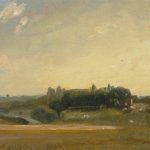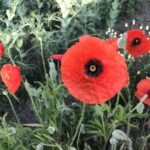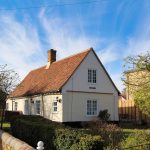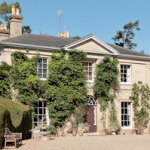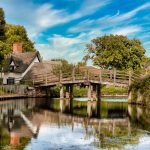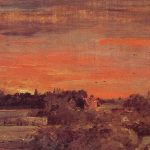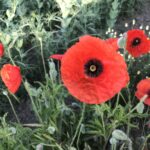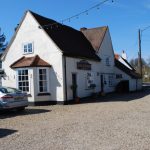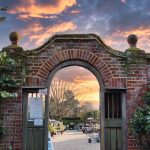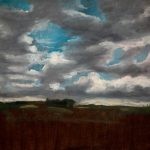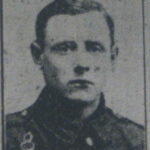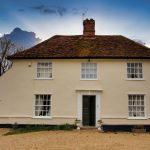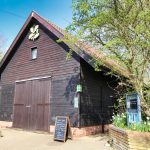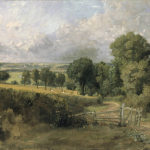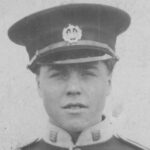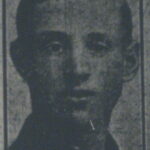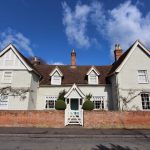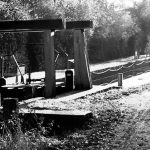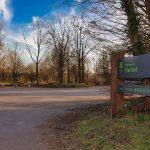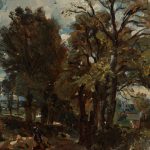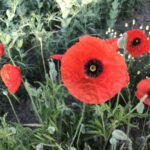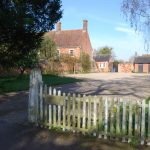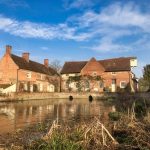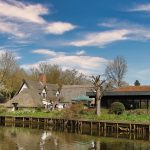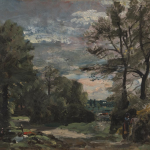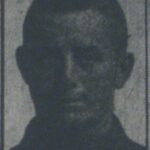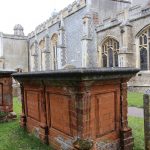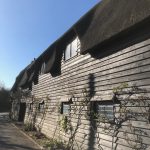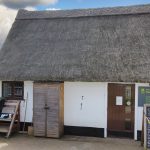Having sketched this exact view the previous evening ‘East Bergholt Common towards the Rectory’ 1813, Constable painted this at sunrise the 19th August of this year.
Ernest moved to East Bergholt with his young family in April 1911. He spent most of his service in the UK before being sent to Russia at the end of October 1918. Ernest died there less than a week later, leaving a wife and daughters.
Built originally in 1705 and became the inheritance of John Constables fathers ‘Golding’ estate, the bridge at Flatford was probably amongst John Constables earliest recollections and was indeed included in many of his sketches over the years.
Constable painted several oil sketches of the view towards East Bergholt Rectory, over the fields that he loved.
Leslie is one of six 19 year olds who are commemorated on the Village Memorial to Those Who Died in the Great War. He was was killed in action on the Western Front, less than two months before the Armistice was signed.
Located within a Victorian walled garden at East Bergholt, Garden & Cafe open daily 10:00 - 17:00.
Parking & toilets available too.
Clouds over the Rectory, a view from East Bergholt House, family home of the Constable family.
Brother of John Dale and William Dale. Abram volunteered to join the Army in September 1914 and served for nearly 3 years on the Western Front with 11th Battalion, the Essex Regiment. He died of wounds in May 1918.
Toilets including accessible and baby changing facilities are open for visitors.
The approach to Fen Lane from Flatford Lane.
Painted in the vicinity of East Bergholt during a long holiday Constable and his wife Maria took in East Bergholt in 1817. This was the last oil painting he executed directly on site.
A pre- war Territorial soldier, Jack was mobilised upon the outbreak of war in August 1914. Initially too young to serve overseas, he was not sent to France until 1917. Jack was killed during the Third Battle of Ypres, aged 19.
Brother of Abram and William Dale. John worked as a Farm Labourer and was conscripted into the Army in 1916. Serving in the Coldstream Guards, John fought at the Third Battle of Ypres in 1917 but was killed later that year during the Battle of Cambrai.
The first lock at Flatford was installed in the early eighteenth century. It was turf sided and located about 20 yards to the north of the present lock.
National Trust pay & display parking at Flatford
open dawn to dusk.
peak times 1100-1400
Constable painted numerous sketches in Fen Lane over the years, a place he knew well having walked the route as a boy from Flatford Lane, down Fen lane, and over the Stour at Fen Bridge to the Grammar School in Dedham.
Robert worked as a Farm Labourer, before joining the Army in late 1915. He was killed in the Battle of the Somme the following year, less than a week after “going into the line” for the very first time.
Flatford Mill, immortalised by John Constable and his painting of The Haywain and the Mill which is as recognisable today as it was then.
Attached to the Mill, is the 17th Century Millers cottage
Serving a seasonal range of takeaway hot and cold drinks and light snacks.
for opening times please see HERE
Well behaved dogs welcome.
The figure of the drinking boy in this sketch appears again in ‘The Cornfield’ 1826 and based on a view towards the Stour from Fen Lane, the track that runs down to the river from Flatford Lane and the route Constable would have walked each day as a boy to the Grammar School in Dedham.
Brother of Abram Dale and John Dale. William served on the Western Front with the Sherwood Foresters. He was seriously wounded during the Third Battle of Ypres and died in hospital six days later.
The Granary would have been built by the mill owner and so from early times it belonged to the mill. The main granary and outbuildings would have been used to store all sorts of things, including wool, wood, coal and grain and flour and at one time was owned by John Constable’s father.
From jams, chutneys, biscuits, books and more, with plenty of ideas for gifts and treats.

